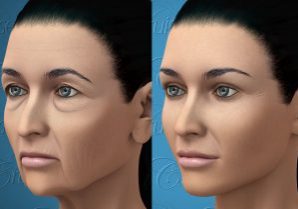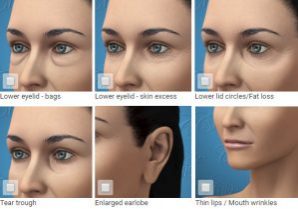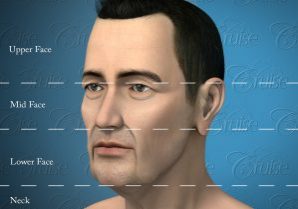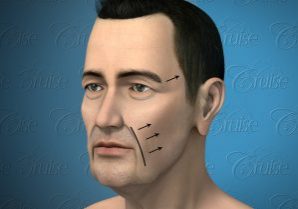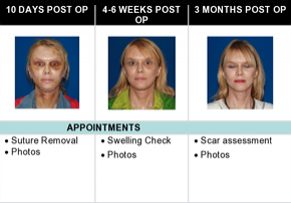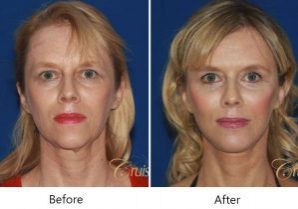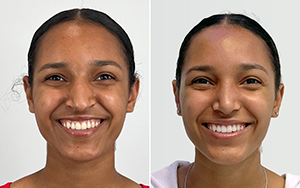Mid Face Rejuvenation
Mid Face Rejuvenation
The CustomLift® approach to the Mid Face
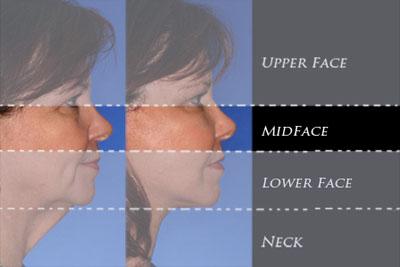
The mid-face consists of the area from the lower eyes to the nasolabial folds.
Lower Eyelid
The lower eye lid is the most complex area of the face when it comes to the aging process. Only recently has plastic surgery begun to understand what really is causing the aging appearance here and even more recently have we figured out how to treat it.
The biggest culprits of lower eye lid aging include:
- excess skin
- sagging of the outer corner of the eye lid (crow's feet)
- bulging eye lid fat (bags)
- circles under the eyes
All of these problems are caused by different aspects of the aging process. The key is to identify which ones are your major concerns, prioritize them, and address them in methodical fashion.
Before we go into the individual aspects of the lower lid, I want to comment on the profound effect fat loss has on the cheeks and lower eyelid. It is probably the single biggest contributor to the aged look of the lower lid and mid face, yet, only recently have we begun to understand this. Because of its attention to detail, CustomLift® has been at the forefront of recognizing this extremely common problem.
Fat transfer to the cheeks and lower lids has become one of the most common procedures I perform on the face. Replenishing volume is treating the problem at its root.
Excess Skin of the Lower Lid
Excess skin of the upper eyelid occurs early in the aging process. The lower lid, however, is different. The skin laxity becomes a problem typically later in the aging process. Fat loss routinely precedes skin laxity. Excess skin shows itself as wrinkly, redundant skin over the lower lid. Often, it can be pinched and pulled away from the lid once it becomes significant.
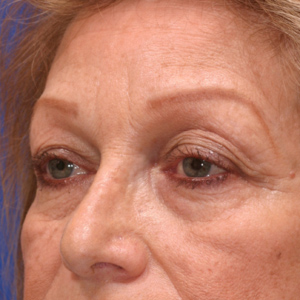
Before
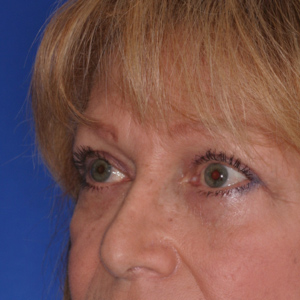
After
Joseph T Cruise, MD treats this by performing a temple lift with or without skin removal of the lower eyelid. This elevates the saggy skin all the way down to the upper cheeks and crow's feet area. This does many positive things. It gets rid of the crow's feet as well as the excess skin of the outer part of the lower lid. In addition, it creates a bright, elegant appearance.
As you may have noticed, Joseph T Cruise, MD places the temple lift as a treatment for both the upper and lower eyelid. This is because the temple lift has a powerful rejuvenating effect on entire eye region. Aging of the temple region is responsible for much of what we have come to recognize as aging around the eye.
The temple lift is perhaps the most powerful rejuvenating procedure related to the entire eye.
Under Eye Bags
Bulging (Bags) of the lower eye lid is caused by two completely different processes. The first one is the most obvious; bulging fat of the lower lid. This fat swells more in the morning and when you are sleep deprived
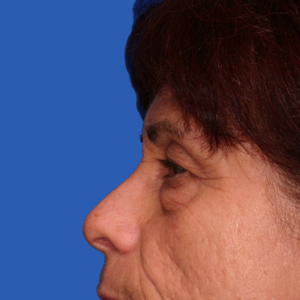
Before
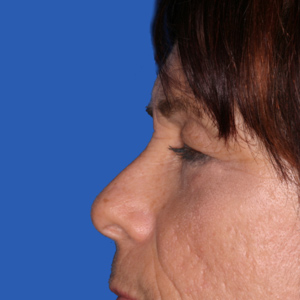
After
The other less obvious cause is LOSS of fat within the upper cheeks. You can confirm this by taking your index finger and pushing down on the circles below your eyes.
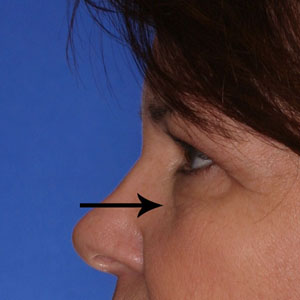
Before
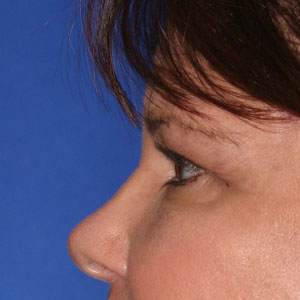
After
Most likely you will immediately feel bone. This is because the fat has melted away.
Hollowing of lower eyelid corrected with fat transfer to the lower eyelid crease. Notice how well this corrects the "circles under the eyes."
The CustomLift® evaluates which of these two factors is present and which needs to be corrected. It is not uncommon to remove fat from the lower lid AND replace fat to the cheeks. This directly treats both issues and, thus, is the most effective treatment for lower lid aging.
Hollow Cheeks and Circles Under the Eyelids
All humans begin losing fat in their cheeks starting from the day they are born. Losing fat before the age of 16 is called "losing baby fat." Losing this same facial fat above the age of 30 is called "aging."
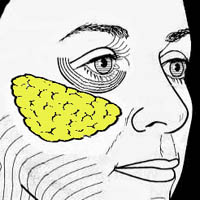
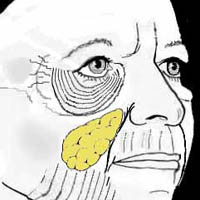
This fat loss becomes a problem in women starting at the age of 30 and with men at the age of 40. This is because a more defined look is desirable in men whereas, in women, it is considered a sign of aging. Cheek fat loss is perhaps the single biggest cause of what we perceive as facial aging.
Look at anyone over the age of 50. By this age most of the cheek fat has gone away leaving behind a hollow, gaunt appearance. Loss of cheek fat over the upper cheek bone leaves the characteristic circles under the eyes. The only way to treat this problem is to replace the fat, thus, restoring our fat reserves.
What does Fat Transfer do?
There are several aspects of fat transfer that make it extremely appealing.
- First and foremost, is that it replaces the precious fat of the cheeks creating a youthful appearance that can not be obtained by any other method.
- It takes fat from an area that usually has too much, i.e. the abdomen creating a win-win situation. Unfortunately, with age we gain fat in the areas we don't want it and lose it in the areas where we need it most.
- It can easily be done under local anesthesia, thus, making it more cost effective and convenient.
Finally, the amount of fat transferred is controllable as the procedure can be repeated until the desired result is obtained. Adding fat not only replaces the fat you have already lost, it gives you a buffer so that when you lose fat in the future it is not so noticeable.
Fat transfer to cheeks. Notice how effectively it rejuvenates the hollow, gaunt appearance of the face and how natural it looks.
Naso-labial Folds
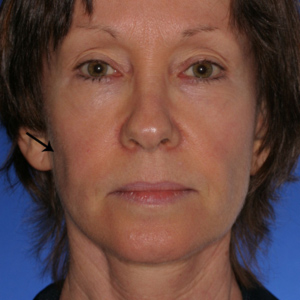
Before
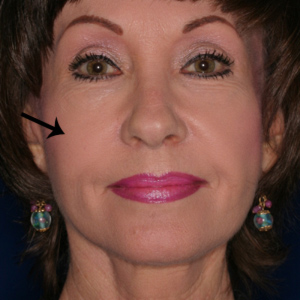
After
Joseph T Cruise, MD's approach to the nasolabial folds, aka "parenthesis deformity," is quite different than the current standard treatment. The mainstay of current treatment is injecting a soft tissue filler to plump up the crease. This does not treat the root cause of the problem.
These folds are not caused by the crease getting deeper. It is caused by the fold above the crease hanging down. Therefore, filling in the crease does not make sense. In addition, this soft tissue filler rarely improves the look for more than two months.
The fold above begins to hang because of loss of cheek fat. Once the volume of the cheek is decreased the skin begins to hang. Therefore, the custom facelift approach provides long-term treatment to the problem by adding fat. This will improve the hanging folds by inflating the cheeks.
By correcting the cause of the problem, facial rejuvenation looks much more natural.

